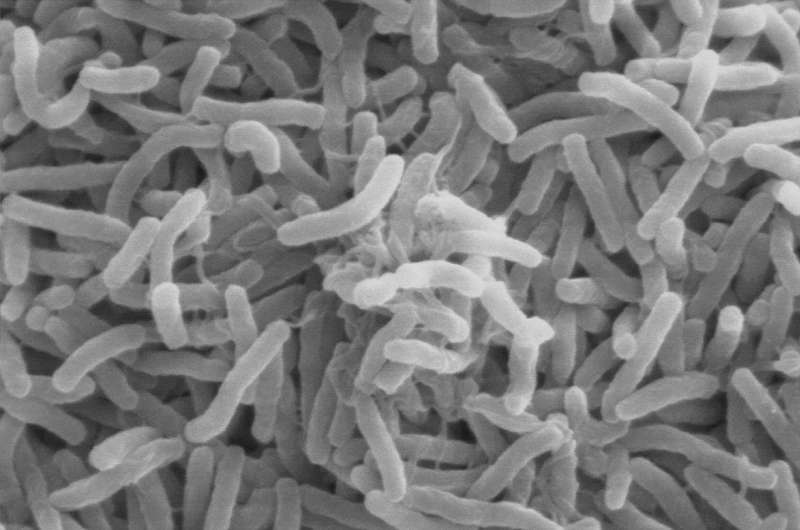This article has been reviewed according to Science X's editorial process and policies. Editors have highlighted the following attributes while ensuring the content's credibility:
fact-checked
trusted source
written by researcher(s)
proofread
Cholera can kill you within hours if left untreated: How to recognize the symptoms and protect yourself

Cholera is a deadly disease caused by the bacterium Vibrio cholerae, associated with poor sanitation and limited access to clean water. But it has also been found in seemingly clean places, including affluent neighborhoods, hotels and restaurants with poor hygiene practices such as handling food with dirty hands and using contaminated water to wash utensils and prepare food.
Cholera outbreaks in Africa have affected 18 countries over the last two years. In southern and eastern Africa, more than 6,000 people have died and nearly 350,000 cases have been reported since a series of outbreaks began in late 2021.
Samuel Kariuki, a microbiologist and director of the Drugs for Neglected Diseases Initiative (Eastern Africa) and former director of the Kenya Medical Research Institute, explains how the disease spreads, the symptoms, how to protect yourself, and how it can be treated.
How does cholera spread?
Cholera can spread directly or indirectly in several ways.
Contaminated water: Drinking or using water contaminated with Vibrio cholerae bacteria is the most common way cholera spreads. Contamination can occur when sewage and drinking water supplies mix.
Contaminated food: Consuming food, especially raw or undercooked food, that has been contaminated can lead to infection. Food can become contaminated if it is handled by someone who has the bacteria or if it is prepared with contaminated water.
Poor sanitation: A lack of proper sanitation infrastructure creates a breeding ground for Vibrio cholerae, facilitating its rapid spread within communities.
Person-to-person transmission: While less common, cholera can spread through direct contact with an infected person's feces or vomit, or through indirect contact via contaminated surfaces or objects.
What are the symptoms?
Cholera symptoms can appear suddenly, within hours to five days after infection. Symptoms range from mild discomfort to severe and life-threatening conditions.
One of the main signs is severe diarrhea, often described as "rice-water" stools, leading to rapid fluid loss from the body and potential muscle cramps due to the loss of essential salts and minerals. Rice water is the starchy water that remains after soaking or cooking rice.
Alongside diarrhea, vomiting is common and can worsen dehydration.
Dehydration is the most concerning symptom, indicated by a dry mouth, extreme thirst, reduced urination, sunken eyes and low blood pressure, potentially progressing to shock. If untreated, it can be fatal within hours.
It's crucial to recognize these symptoms promptly and seek medical help to prevent severe complications.
How do you protect yourself from cholera?
- Ensure you always use safe drinking water. Always use boiled or chemically treated water for drinking and food preparation, and avoid ice made from untreated water.
- Always practice hand hygiene. Wash your hands frequently with soap and safe water, especially after using the toilet, after changing diapers, and before eating or preparing food. Handwashing is one of the most effective ways to prevent the spread of many infectious diseases, including cholera.
- Avoid raw or undercooked food. Consume food that is thoroughly cooked and still hot, and peel fruit and vegetables yourself after washing them with safe water.
- Maintain good sanitation practices by ensuring that toilets are thoroughly cleaned. In households with toddlers who use potties, properly dispose of human waste and clean all surfaces thoroughly.
- Oral cholera vaccines are available and safe for both children and adults. These vaccines are valuable tools in cholera prevention, but they must be used with all the other preventive measures.
How can cholera be treated?
Timely and appropriate treatment of cholera is essential to prevent severe dehydration and fatalities. Treatment focuses on rehydration and supportive care:
Rehydration: The primary treatment for cholera is rapid rehydration using oral rehydration salts. This is a simple solution of sugar and salts that is mixed with clean water. It is highly effective in replacing lost fluids and electrolytes and can be administered at home or in a health care facility.
Intravenous fluids: In severe cases where dehydration is extreme, intravenous fluids may be necessary. This can quickly restore fluid levels and is vital for patients who cannot keep down oral fluids because they are vomiting.
Antibiotics: Rehydration is the cornerstone of cholera treatment, but antibiotics can reduce the duration and severity of symptoms. They are particularly useful in severe cases and for patients with a high risk of spreading the infection.
Zinc supplements: These supplements can reduce the duration and severity of diarrhea, especially for children. Zinc is an essential mineral that supports immune function and gut health. The right dose should be prescribed by a medical practitioner.
Cholera is preventable and treatable. Stay informed, take preventive measures, and contribute to a healthier, cholera-free world.
This article is republished from The Conversation under a Creative Commons license. Read the original article.![]()

















